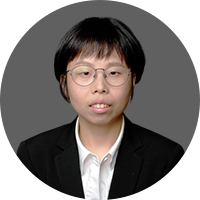Biotechnology & medicine
Miao Gui
Clarifying the molecular composition of the core skeleton of cilia using cryo-electron microscopy and AI-assisted atomic modeling.

Europe
Boon Lim
Chief Technology Officer of Oxford SimCell Limited

MENA
Mohanad Alkhodari
AI-based digital twin for the assessment of hypertension progression using multi-organ multi-modality imaging measurements.

Global
Jiawen Li
Engineering a tiny device to help cardiologists with a common problem.

China
Fei Wang
For the first time, she experimentally demonstrated reliable operations of large-scale computational circuits containing 30 logic gate elements and 30 layers of DNA strand displacement reactions, breaking through the bottleneck of DNA molecular computation in terms of circuit size and depth over the last 20 years.
